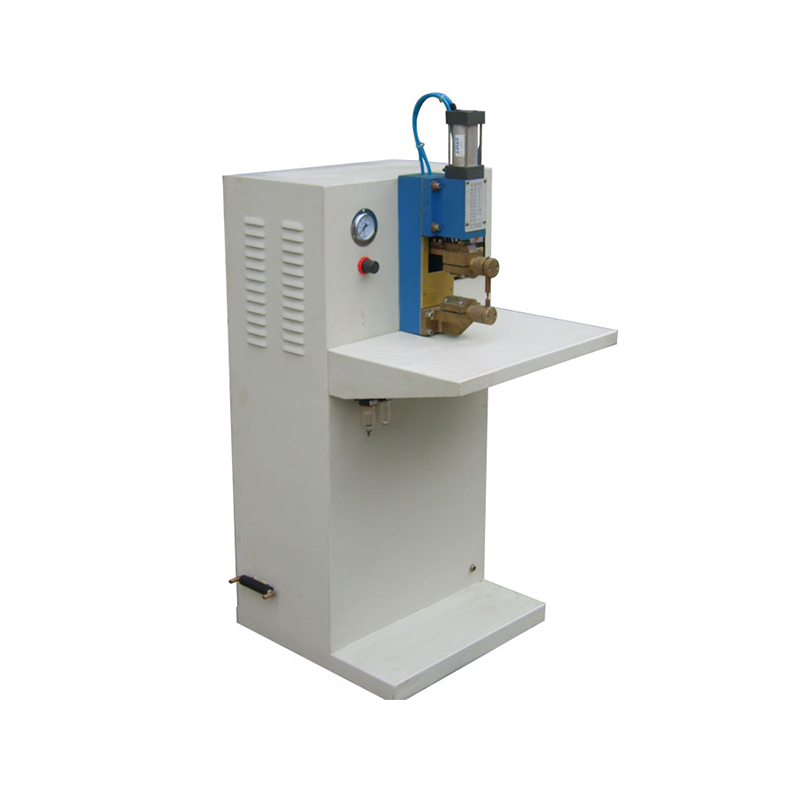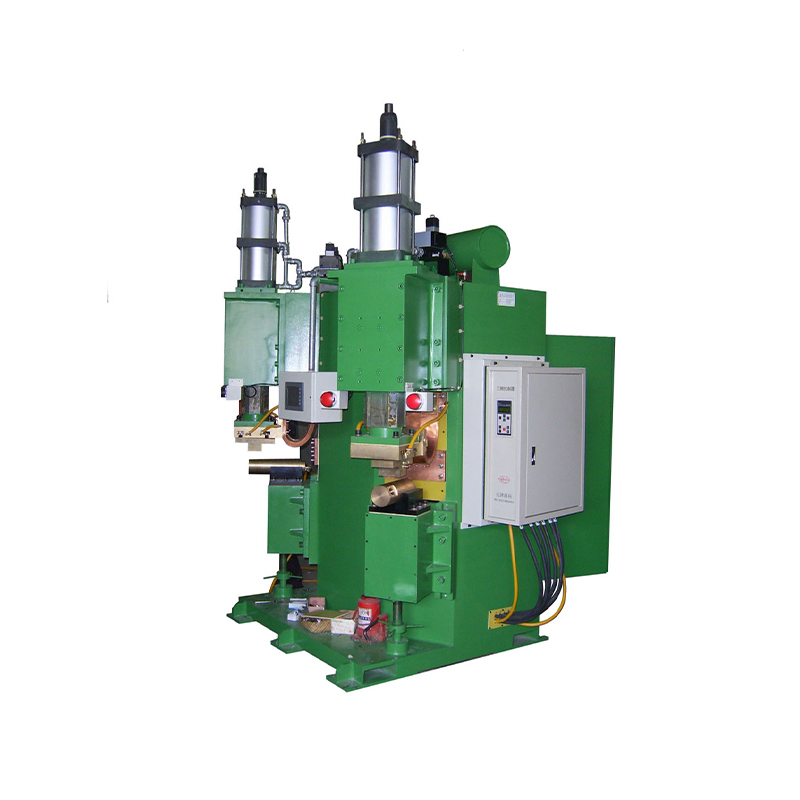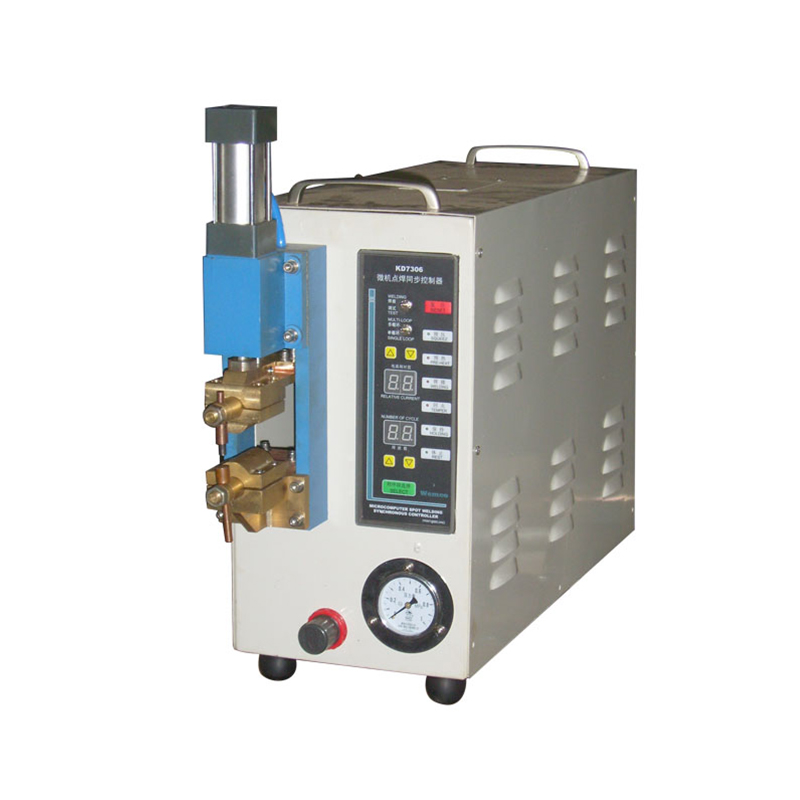Why is the H-type fin welding production line so popular in radiator manufacturing?
Release Time : 2025-08-28
In modern industrial manufacturing, radiators, as core components of heat exchange systems, are widely used in fields such as power, chemical engineering, metallurgy, rail transportation, and new energy. With increasing demands for heat dissipation efficiency, structural strength, and production cost control, traditional manual or semi-automatic welding methods are no longer able to meet the demands of large-scale, high-quality production. The H-type fin welding production line, with its superior technical advantages and comprehensive performance, has quickly emerged as a popular choice in radiator manufacturing.
1. Structural Advantages: H-type Fins' Efficient Heat Dissipation Design
H-type fins are a key component of radiators due to their unique "H"-shaped structure. This design not only increases the contact area between the fins and the air, improving heat transfer efficiency, but also enhances overall structural rigidity and wind pressure resistance through symmetrical fins. H-type fins demonstrate exceptional stability and durability, particularly in high-temperature, high-pressure, and high-vibration environments. Designed around this structural feature, the H-type fin welding production line enables precise and continuous welding of fins to steel or flat tubes. Compared to traditional wrapping or sleeve processes, H-type fins utilize high-frequency welding or resistance welding to achieve a metallurgical bond between the fins and the base tube, minimizing contact thermal resistance and significantly improving heat dissipation efficiency. This integrated welding structure also eliminates the risk of fin loosening or detachment associated with traditional processes, extending the lifespan of the radiator.
2. Automated Integration: Improving Efficiency and Consistency
The greatest advantage of the H-type fin welding production line lies in its high degree of automation and integration. The entire production line typically includes multiple stations, including automatic loading, straightening, fin feeding, high-frequency welding, cooling and shaping, cutting to length, and unloading inspection, all coordinated by a PLC control system. This fully automated process not only significantly reduces manual intervention and labor intensity, but also ensures highly consistent weld quality for every radiator tube. In large-scale production, traditional manual welding often suffers from uneven welds and pitch deviations. However, the H-type fin welding production line, utilizing a precision servo control system and high-precision positioning devices, can achieve fin pitch tolerances within ±0.5mm, with welding speeds reaching tens of meters per minute. This significantly improves production efficiency and product qualification rates. This is undoubtedly key to enhancing competitiveness for radiator manufacturers pursuing scale and standardization.
3. Advanced Technology: Ensuring Welding Quality and Material Properties
H-type fin welding is commonly performed using high-frequency induction welding (HF welding) or resistance welding. This method utilizes an electric current passing through the contact surfaces to generate heat, locally melting the metal and forming a pressure-bonded joint. This welding method minimizes the heat-affected zone (HAZ), resulting in a fine, uniform weld without damaging the microstructure of the fins or base tube, maintaining excellent thermal conductivity and mechanical strength. The production line is equipped with an intelligent temperature control system and real-time monitoring devices, which dynamically adjust parameters such as welding current, pressure, and speed to ensure stable welds across a variety of materials (such as carbon steel, stainless steel, and aluminum) and specifications. Post-weld cooling and straightening further eliminate internal stresses, prevent deformation, and ensure product straightness and flatness, meeting high-precision assembly requirements.
4. Flexible Production: Adapting to Diverse Market Demands
Modern radiators face complex and diverse application environments, and customer requirements for product specifications, fin density, and tube diameters are increasingly personalized. The H-type fin welding production line offers excellent flexibility. By changing molds, adjusting parameters, and programming controls, production of different models can be quickly switched. This supports high-variety, small-batch customization and helps companies quickly respond to market changes. Furthermore, the production line can be integrated with the MES system for production data traceability, quality analysis, and remote monitoring, helping companies move towards smart manufacturing.
5. Dual Economic and Environmental Benefits
From a cost perspective, H-type fin welding utilizes continuous feeding and an efficient welding process, resulting in high material utilization and low energy consumption. The overall manufacturing cost is significantly lower than traditional processes. Furthermore, automated production reduces scrap and rework rates, further conserving resources. Environmentally friendly, high-frequency welding uses no open flames, welding wire, or harmful gas emissions, making it a green manufacturing process that aligns with current trends in industrial sustainability.
The H-type fin welding production line is highly favored in the heat sink manufacturing industry not only because it addresses many of the pain points of traditional processes, but also because it combines efficiency, precision, stability, and environmental friendliness, perfectly meeting the modern industry's demand for high-quality, efficient, and intelligent production.
1. Structural Advantages: H-type Fins' Efficient Heat Dissipation Design
H-type fins are a key component of radiators due to their unique "H"-shaped structure. This design not only increases the contact area between the fins and the air, improving heat transfer efficiency, but also enhances overall structural rigidity and wind pressure resistance through symmetrical fins. H-type fins demonstrate exceptional stability and durability, particularly in high-temperature, high-pressure, and high-vibration environments. Designed around this structural feature, the H-type fin welding production line enables precise and continuous welding of fins to steel or flat tubes. Compared to traditional wrapping or sleeve processes, H-type fins utilize high-frequency welding or resistance welding to achieve a metallurgical bond between the fins and the base tube, minimizing contact thermal resistance and significantly improving heat dissipation efficiency. This integrated welding structure also eliminates the risk of fin loosening or detachment associated with traditional processes, extending the lifespan of the radiator.
2. Automated Integration: Improving Efficiency and Consistency
The greatest advantage of the H-type fin welding production line lies in its high degree of automation and integration. The entire production line typically includes multiple stations, including automatic loading, straightening, fin feeding, high-frequency welding, cooling and shaping, cutting to length, and unloading inspection, all coordinated by a PLC control system. This fully automated process not only significantly reduces manual intervention and labor intensity, but also ensures highly consistent weld quality for every radiator tube. In large-scale production, traditional manual welding often suffers from uneven welds and pitch deviations. However, the H-type fin welding production line, utilizing a precision servo control system and high-precision positioning devices, can achieve fin pitch tolerances within ±0.5mm, with welding speeds reaching tens of meters per minute. This significantly improves production efficiency and product qualification rates. This is undoubtedly key to enhancing competitiveness for radiator manufacturers pursuing scale and standardization.
3. Advanced Technology: Ensuring Welding Quality and Material Properties
H-type fin welding is commonly performed using high-frequency induction welding (HF welding) or resistance welding. This method utilizes an electric current passing through the contact surfaces to generate heat, locally melting the metal and forming a pressure-bonded joint. This welding method minimizes the heat-affected zone (HAZ), resulting in a fine, uniform weld without damaging the microstructure of the fins or base tube, maintaining excellent thermal conductivity and mechanical strength. The production line is equipped with an intelligent temperature control system and real-time monitoring devices, which dynamically adjust parameters such as welding current, pressure, and speed to ensure stable welds across a variety of materials (such as carbon steel, stainless steel, and aluminum) and specifications. Post-weld cooling and straightening further eliminate internal stresses, prevent deformation, and ensure product straightness and flatness, meeting high-precision assembly requirements.
4. Flexible Production: Adapting to Diverse Market Demands
Modern radiators face complex and diverse application environments, and customer requirements for product specifications, fin density, and tube diameters are increasingly personalized. The H-type fin welding production line offers excellent flexibility. By changing molds, adjusting parameters, and programming controls, production of different models can be quickly switched. This supports high-variety, small-batch customization and helps companies quickly respond to market changes. Furthermore, the production line can be integrated with the MES system for production data traceability, quality analysis, and remote monitoring, helping companies move towards smart manufacturing.
5. Dual Economic and Environmental Benefits
From a cost perspective, H-type fin welding utilizes continuous feeding and an efficient welding process, resulting in high material utilization and low energy consumption. The overall manufacturing cost is significantly lower than traditional processes. Furthermore, automated production reduces scrap and rework rates, further conserving resources. Environmentally friendly, high-frequency welding uses no open flames, welding wire, or harmful gas emissions, making it a green manufacturing process that aligns with current trends in industrial sustainability.
The H-type fin welding production line is highly favored in the heat sink manufacturing industry not only because it addresses many of the pain points of traditional processes, but also because it combines efficiency, precision, stability, and environmental friendliness, perfectly meeting the modern industry's demand for high-quality, efficient, and intelligent production.







